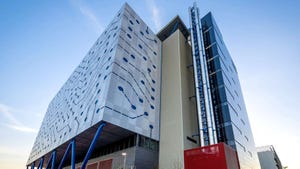Data Center Trends: Industry Report Reveals Shift Towards Hybrid IT, ColocationData Center Trends: Industry Report Reveals Shift Towards Hybrid IT, Colocation
CoreSite’s 2024 State of the Data Center Report sees some repatriation of cloud workloads and more hybrid deployments, driven in part by AI.

CoreSite, a hybrid IT solutions provider and subsidiary of American Tower Corporation, released its 2024 State of the Data Center Report today, shedding light on the latest trends in data center and cloud computing strategies.
The report, now in its fifth year, provides valuable insights into how organizations are adapting their IT infrastructure to meet evolving business needs, particularly in the face of resource-intensive artificial intelligence (AI) workloads and the demand for seamless cloud connectivity.
Key findings in the new report include:
98% of organizations have adopted or plan to adopt a hybrid IT model
95% of respondents say native, direct connections to major cloud providers are important
60% of organizations are already using a hybrid model, up from 55% in 2022
91% of respondents are considering moving generative AI applications from the public cloud to colocation facilities
Only 31% of respondents say their current colocation provider offers interconnection to various cloud providers
“The most surprising insight was that despite cloud interconnection being the top reason for using colocation for nearly half of the 22 workloads included in the survey, only 31% of respondents said their current colocation provider offers interconnection to a variety of cloud providers,” Juan Font, CoreSite president and CEO and American Tower senior vice president, told Data Center Knowledge.
Public Cloud Workloads Are Being Repatriated
Another notable trend is the movement of workloads from public cloud environments to colocation data centers.
The report indicates that public cloud usage is trending downward across all workloads compared to the 2023 study. This shift is particularly pronounced for workloads such as generative AI applications, business intelligence, data analytics as well as IoT connectivity and management.
“Historically, public cloud was viewed as the quick and easy answer to replacing legacy technology, adding capabilities, or improving agility and flexibility,” Font said.
Font added that the 2024 report found that organizations are shifting to a more “cloud smart” approach that relies on a balance of cloud with colocation and to a lesser degree on-premises.
“As workloads mature, organizations often find that keeping them in the public cloud is overly expensive,” he said. “This is propelling a shift back to colocation, which offers cost predictability and data and broadband savings as well as better physical security, reliability, scalability, and the performance and speed needed for a competitive edge.”
AI Workloads Driving Colocation Adoption
The report identifies AI as a significant factor accelerating the adoption of colocation services. As organizations increase their investments in AI and machine learning, they are reconsidering which environments provide the best cost/performance benefits for these resource-intensive workloads.
The survey shows a shift of AI-specific workloads from on-premises environments to colocation data centers. Additionally, a large majority of respondents are considering moving AI-related workloads from public cloud to colocation, including generative AI applications (91%), chatbots (81%), and predictive analytics (79%).
Read more of the latest cloud computing news
The adoption of AI is still relatively recent and it's not entirely clear yet how and where all the AI workloads will land in different types of data center environments.
“I’m curious to see how the shift to a cloud-smart approach evolves, particularly as AI, ML, and other high-density workloads grow exponentially,” Font said.
About the Author
You May Also Like









